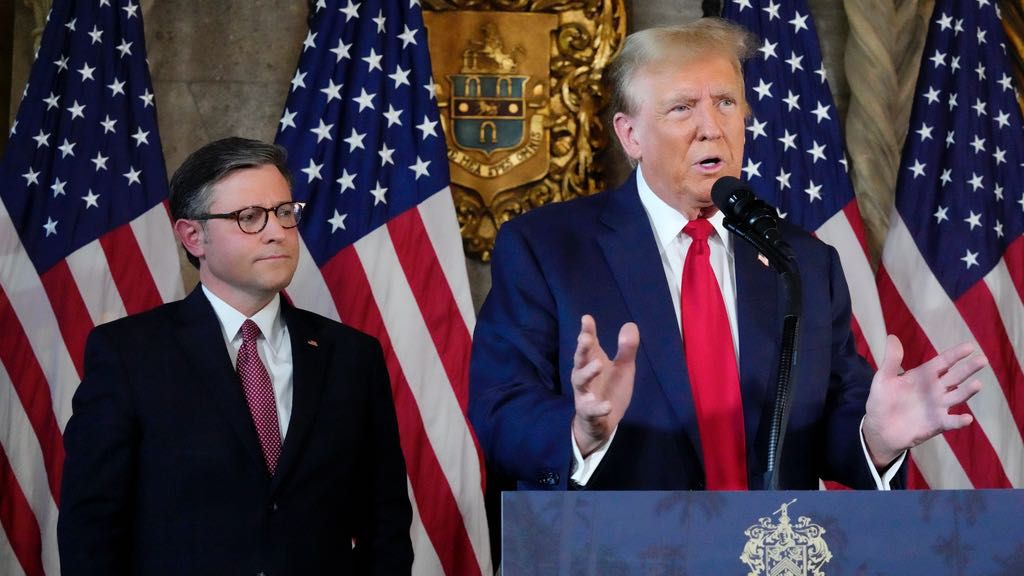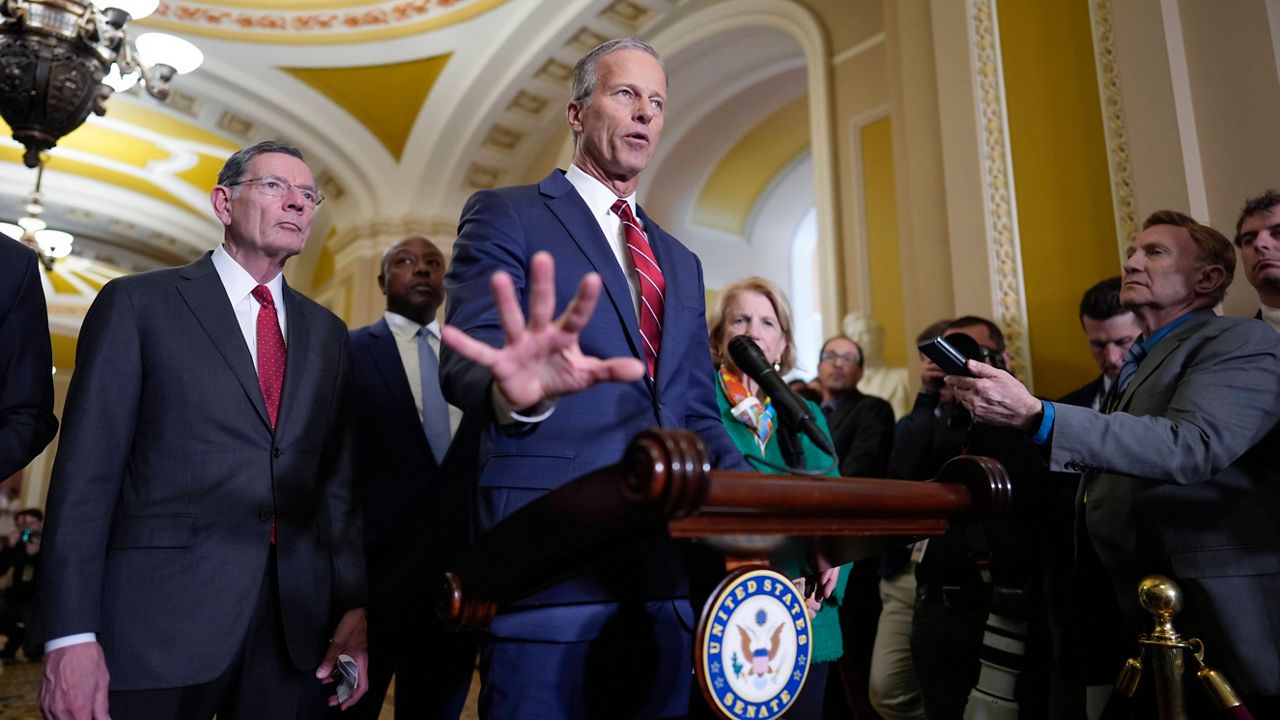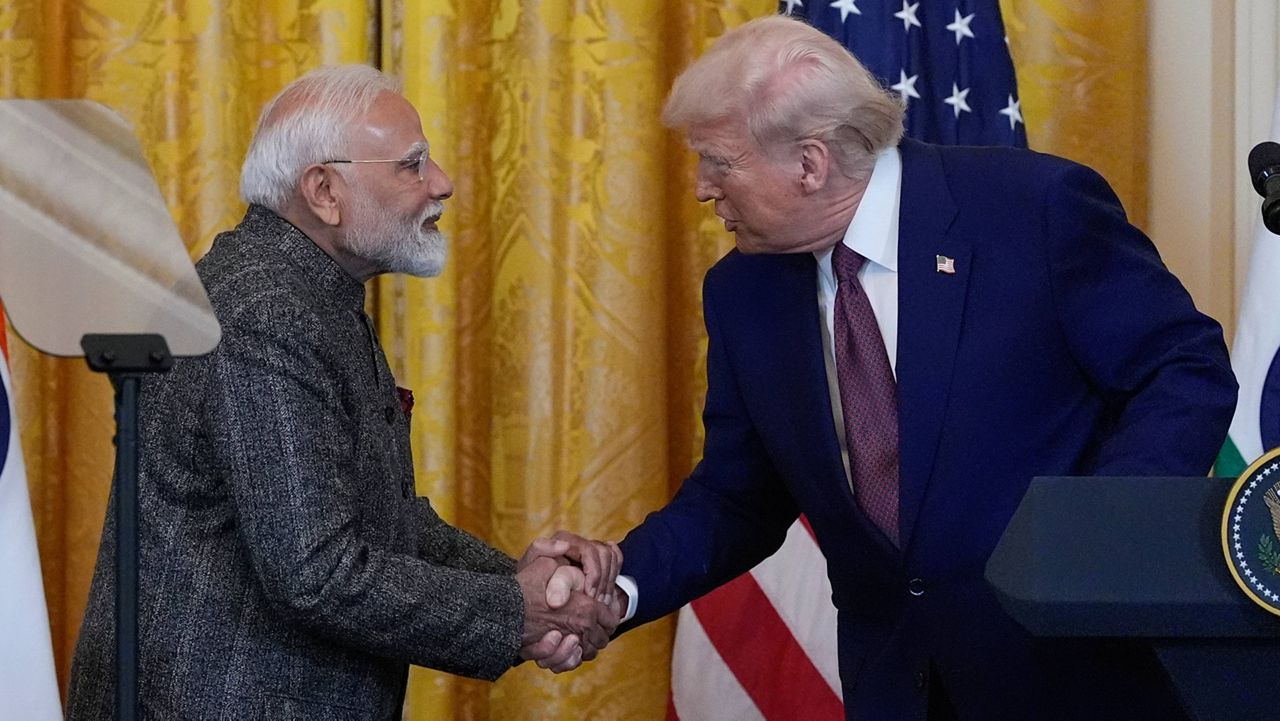A former senior intelligence officer made a series of jaw-dropping claims Wednesday during a House subcommittee hearing on UFOs, or what the federal government officially refers to as unidentified aerial phenomena (UAP).
What You Need To Know
- A former senior intelligence officer made a series of jaw-dropping claims Wednesday during a House subcommittee hearing on UFOs, or what the federal government officially refers to as unidentified aerial phenomena
- Among his claims, David Grusch said he learned of a secret “multi-decade UAP crash, retrieval and reverse engineering program" that recovered “non-human origin technical vehicles” along with non-human remains
- Asked by Rep. Tim Burchett, R-Tenn., if he had knowledge of people having been harmed or injured in efforts to conceal extraterrestrial technology, Gruch answered, “Yes.”
- Grusch was one of three witnesses who testified at the hearing, which focused on improving investigations into UAP sightings and creating more transparency around them
David Grusch, who worked for the National Geospatial Intelligence Agency and was a senior technical adviser on UAP issues, told the National Security, the Border and Foreign Affairs Subcommittee he learned of a secret “multi-decade UAP crash, retrieval and reverse engineering program.”
The program, he said, has recovered “non-human origin technical vehicles” along with non-human remains. Grusch said his assessment is based on interviews with more than 40 witnesses.
Grusch said he became a whistleblower after he received “concerning reports from multiple esteemed and credentialed current and former military and intelligence community individuals that the U.S. government is operating with secrecy above congressional oversight.”
He said he’s faced retaliation since coming forward, although he did not elaborate, citing an ongoing investigation.
Asked by Rep. Tim Burchett, R-Tenn., if he had knowledge of people having been harmed or injured in efforts to conceal extraterrestrial technology, Gruch answered, “Yes.”
“Have you heard of anyone being murdered?” Burchett followed.
Grusch said he had to be careful answering the question and has “directed people with that knowledge to the appropriate authorities.”
The Air Force veteran also said he has feared for his own life since becoming a whistleblower and that some of his colleagues have been “brutally administratively attacked,” which he characterized as “administrative terrorism … to silence people.”
Grusch was one of three witnesses who testified at the hearing, which focused on improving investigations into UAP sightings and creating more transparency around them.
“The lack of transparency regarding UAPs has fueled wild speculation and debate for decades, eroding public trust in the very institutions that are meant to serve and protect them,” said Rep. Glenn Grothman, R-Wis., the panel’s chairman.
In a statement to Spectrum News on Wednesday, Defense Department spokeswoman Sue Gough said the Pentagon “takes public interest in UAP seriously.”
“The Department is fully committed to openness and accountability to the American people, which it must balance with its obligation to protect sensitive information, sources, and methods,” she said. “DoD also committed to timely and thorough reporting to Congress.”
Gough said AARO has established a “safe and secure process” for people to report information to AARO, adding the office welcomes the opportunity to speak with any former or current government employees or contractors who believe they have relevant information.
Sean Kirkpatrick, director of the All-domain Anomaly Resolution Office, told a Senate committee in April that his office "has found no credible evidence thus far of extraterrestrial activity, off-world technology or objects that defy the known laws of physics."
Last year, the Pentagon expanded the scope of an existing office investigating UAP sightings and renamed it the All-Domain Anomaly Resolution Office, or AARO. A 2022 report by the Office of the Director of National Intelligence said there have been more than 500 reported UAP sightings over the years, but 171 have not been explained.
Ryan Graves, executive director of Americans for Safe Aerospace and a former Navy pilot, described participating in a training mission in 2014 off the coast of Virginia when “a dark gray or a black cube inside of a clear sphere came within 50 feet of the lead aircraft and was estimated to be five to 15 feet in diameter.”
“Soon these encounters became so frequent that aircrew would discuss the risk of UAP as part of their regular preflight briefs,” he said.
Retired Navy Cmdr. Dave Fravor said he and three other pilots in 2004 witnessed from a close distance a mysterious object flying off the coast of southern California. The aircraft, shaped like a Tic Tac candy, could rapidly descend and ascend from 20,000 feet to 80,000 feet, he said.
“For those that don't realize, about 80,000 feet is space,” he said.
Below the aircraft was turbulent whitewater in an otherwise calm ocean, and one minute after it zoomed away, it was spotted on radar 60 miles away, Fravor said.
Witnesses said the UAP they’ve seen or been told about moved in ways they could never have fathomed.
“I think it's far beyond actually our material science that we currently possess,” Fravor said.
Added Graves: “The objects that are being seen by commercial pilots are performing maneuvers that are unexplainable due to our current understanding of our technology and our capabilities as a country, and that applies for the military as well.
“If UAPS are foreign drones, it’s an urgent national security problem,” Graves said. “If it is something else, it’s an issue for science.”
But the witnesses said investigations are plagued by a number of factors, including limited avenues for military and commercial pilots to report incidents, a stigma attached to making such reports, fears of reprisal and the lack of a central government entity to collect reports. Too often, agencies do not communicate with each other about reported sightings, they said.
“It's a travesty that we don't have a system to correlate this and actually investigate,” asserted Fravor, who said no one investigated his sighting until five years later. “ … You need a centrally located repository that these reports go to.”
The witnesses also insisted, other than in cases when disclosing information could jeopardize national security, there is little justification for the federal government to closely guard information about UAPs.
“There's no reason that the objects themselves would be classified,” Graves said. “I would be curious to see how the security classification guideline actually spells out the different nuances of how this topic is classified.”
Note: This article was updated to include the Defense Department's response.









